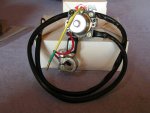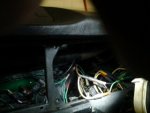harrisson_citroen
Frogs Parking Only - All others will be toad.
VIP Paid Subscriber
1000+ Posts
Fellow Frogger
As the more educated amongst you will know, the positive battery terminal on the DS23IE is equipped with a small solenoid and a push button from where you can trigger the starter motor. I have had to replace that fitting along with a new coil. Everything in place but cannot find a wire going from dash board key to the battery solenoid.
Hence the question: because I've noticed the two wires coming off the solenoid are live with 12 volts, is it just a matter of bridging them ie installing a "START" button on the dash and connecting the two live wires to fire the starter?
Hence the question: because I've noticed the two wires coming off the solenoid are live with 12 volts, is it just a matter of bridging them ie installing a "START" button on the dash and connecting the two live wires to fire the starter?





 :jiggy:
:jiggy: